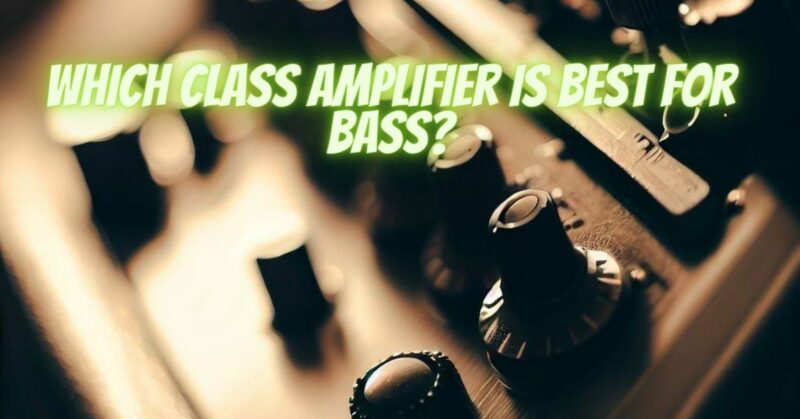When it comes to achieving the best bass performance in audio systems, the choice of amplifier class plays a significant role. Amplifiers are categorized into different classes based on their design and operation, each offering distinct advantages and drawbacks. In the realm of bass amplification, the most commonly considered classes are Class A, Class AB, Class D, and occasionally Class H. Let’s explore these amplifier classes to determine which one is best suited for bass.
Class A Amplifiers
Class A amplifiers are renowned for their exceptional sound quality due to their linear operation. They amplify the entire audio signal cycle without switching, resulting in minimal distortion and high fidelity. However, this comes at the cost of efficiency, as Class A amplifiers generate a lot of heat and consume more power.
Pros:
- Excellent sound quality with minimal distortion.
- Ideal for audiophiles seeking pure and detailed audio reproduction.
Cons:
- Inefficient and generate significant heat.
- Large and bulky due to heat dissipation requirements.
Bass Performance: Class A amplifiers can deliver clean and accurate bass, but their inefficiency and bulkiness make them less practical for applications requiring high power for deep bass reproduction.
Class AB Amplifiers
Class AB amplifiers combine the benefits of Class A and Class B designs. They operate in Class A mode for small signals and switch to Class B mode for larger signals, offering a balance between sound quality and efficiency.
Pros:
- Better efficiency than Class A.
- Good sound quality with moderate distortion levels.
Cons:
- Still generate some heat, though less than Class A.
- Larger and heavier than Class D amplifiers.
Bass Performance: Class AB amplifiers provide strong, well-defined bass with less distortion than Class B. They are a popular choice for bass due to their balance of sound quality and efficiency, making them suitable for both home and car audio systems.
Class D Amplifiers
Class D amplifiers, also known as digital or switching amplifiers, are highly efficient. They use pulse-width modulation (PWM) to switch the output transistors on and off rapidly, resulting in less heat generation and compact size.
Pros:
- Highly efficient, with up to 90% efficiency.
- Compact and lightweight, making them ideal for portable and space-constrained applications.
Cons:
- Higher distortion levels compared to Class A and AB.
- Potential for high-frequency noise, though modern designs mitigate this.
Bass Performance: Class D amplifiers excel in delivering powerful, deep bass due to their high efficiency and ability to provide substantial power output without excessive heat. They are particularly favored in subwoofer applications and car audio systems where space and cooling are concerns.
Class H Amplifiers
Class H amplifiers are essentially an extension of Class AB designs, incorporating multiple power supply rails that adjust according to the input signal level. This improves efficiency by reducing the power wasted as heat.
Pros:
- Better efficiency than Class AB.
- Can deliver high power with reduced heat output.
Cons:
- More complex and potentially more expensive.
- Sound quality can vary depending on design and implementation.
Bass Performance: Class H amplifiers can deliver strong bass performance with improved efficiency compared to Class AB. They are often used in professional audio and high-power sound reinforcement applications where reliable and powerful bass output is required.
When it comes to choosing the best amplifier class for bass, Class D amplifiers stand out as the top choice. Their high efficiency, compact size, and ability to deliver substantial power make them ideal for bass-heavy applications, particularly in subwoofers and car audio systems. While Class AB amplifiers also provide excellent bass with good sound quality, they cannot match the efficiency and power handling of Class D.
Ultimately, the best amplifier class for bass depends on your specific needs and constraints. For pure audio quality in a home setup, a high-quality Class AB amplifier may suffice. However, for maximum efficiency, power, and deep bass performance in a compact form, Class D amplifiers are the optimal choice.

